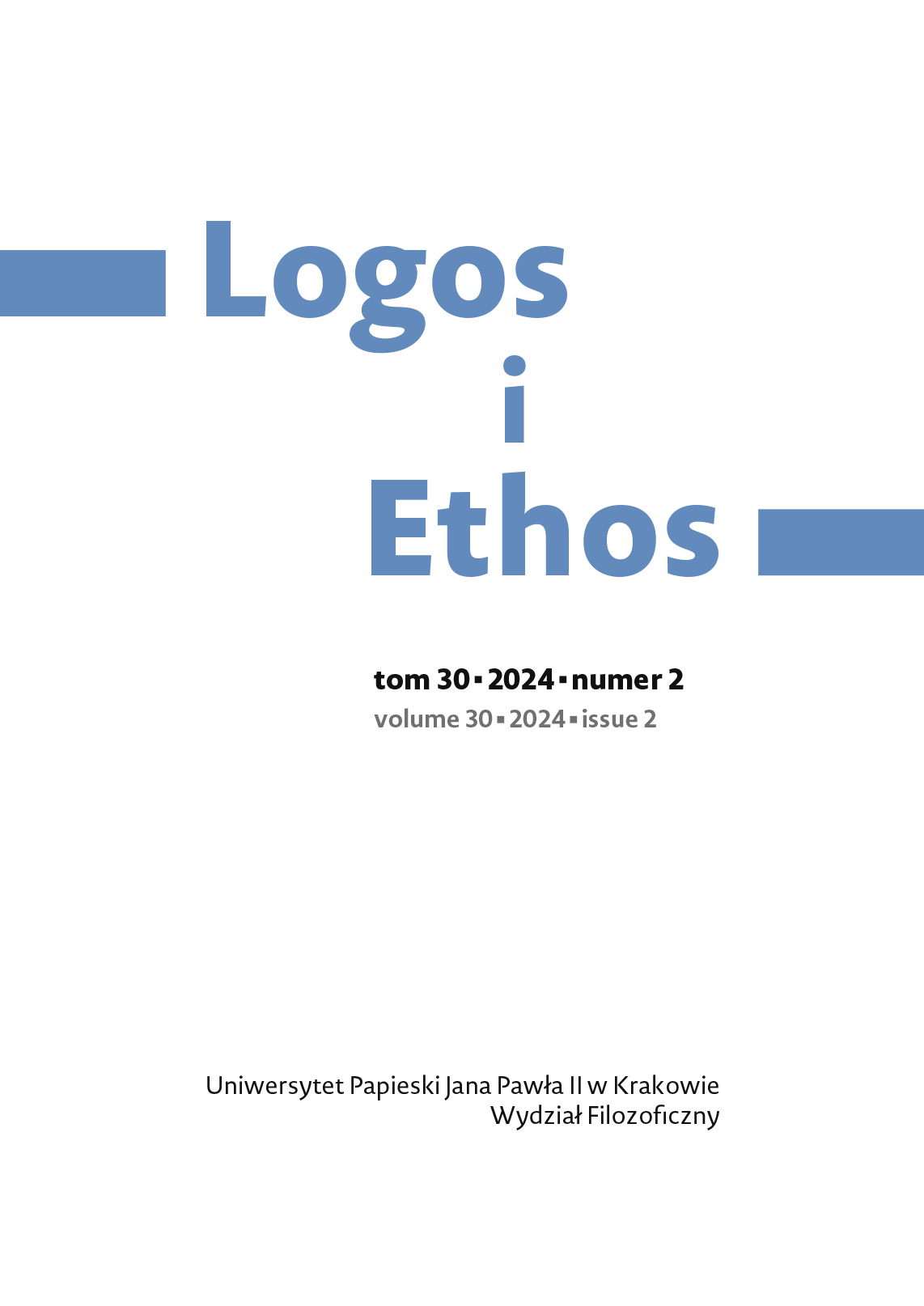Empedocles’ attitude towards Parmenides
DOI:
https://doi.org/10.15633/lie.30206Keywords:
Empedocles, Parmenides, φιλότης (love), νεῖκος (strife), σφαῖρος (sphere), στοιχεῖα (elements)Abstract
The article is an attempt to explain to what extent Empedocles could imitate the way of thinking of Parmenides in his views on the nature of reality and its order. The analyzes of the assumptions of both thinkers show that Parmenides’ goal was to show what consequences result from adopting the only way, that it is (ὡς ἔστιν). Empedocles, on the other hand, addresses the problem of moving from the one (ἐξ ἑνός) to many (πλέονα) and from many (ἐκ πλεόνων) to the one (ἕν). In order to obtain a clear understanding of the experienced reality, Empedocles used the rules resulting from the thinking of being established by Parmenides. Adopting this method of interpretation, an attempt was made to re-analyze those aspects of Empedocles’ theory, the content of which is considered to refer to the views of Parmenides. Empedocles’ first reference to Parmenides is the theory of Love (Φιλότης), which would correspond to Parmenides’ thesis about Eros as a beginning (ἀρχήν) of all (τοῦ παντός). However, the area possessed by the Friendship impulse is referred to by Empedocles as Σφαῖρος. The application of the term Σφαῖρος to the area defined by Friendship, which is equal in length and breadth, may refer to Parmenides’ thesis that the boundaries of being are similar to a well-rounded sphere (σφαίρης) from the center equal everywhere. It is also generally accepted that Empedocles accepted Parmenides’ theorem that anything (οὐδέν) can come to be out of nothing (ἐκ μηδενός), which, however, is present in this form only in Melissus. It is likely that Empedocles, when writing about ungenerated elements, refers to Parmenides’ theses regarding light and night, included in his speech on the deceptive order.
References
Aristoteles Graece, ex rec. I. Bekkeri, vol. 1–2, Berolini 1831, wydanie drugie, poprawione: Aristoteles Graece, ed. O. Gigon, Berolini 1960.
Arystoteles, Metafizyka, przeł. K. Leśniak, w: Arystoteles, Dzieła wszystkie, t. 2: Fizyka. O niebie. O powstawaniu i niszczeniu. Meteorologika. O świecie. Metafizyka, Warszawa 1990, s. 601–857.
Barnes J., The presocratic philosophers, London 1979.
Burnet J., Early Greek philosophy, London 1920.
Diels H., Doxographi Graeci, Berolini 1879.
Diels H., Kranz W., Die Fragmente der Vorsokratiker, vol. 1, Weidmann 1989.
Diogenis Laertii de Vitis, Dogmatis et Apophthegmatis Clarorum Philosophorum Libri Decem, vol. 2, ed. H. G. Huebnerus, Lipsiae 1831.
Guthrie W. K. C., A history of Greek philosophy, vol. 2, Cambridge University Press, 1965.
Hesiodi Theogonia. Opera et dies. Scutum, eds. F. Solmsen, R. Merkelbach, M. L. West, Oxford University Press, 1990.
Hesychii Alexandrini Lexicon, ed. M. Schmidt, Jenae 1867.
Homerus, Ilias, ed. W. Dindorf, C. Hentze, Lipsiae 1921.
Kirk G. S., Raven J. E., Schofield M., Filozofia przedsokratejska, przekł. J. Lang, Warszawa–Poznań 1999.
L’Empédocle de Strasbourg (P. Strasb. gr. Inv. 1665–1666). Introduction, edition et commentaire A. Martin, O. Primavesi, Berlin–New York 1999.
Longrigg J., The „roots of all things”, „Isis” 67 (1976) no. 3, https://doi.org/10.1086/351632.
McKirahan R. D., Philosophy before Socrates, Hackett Publishing Company, 2010.
Palmer J., Parmenides and presocratic philosophy, Oxford University Press, 2009, https://doi.org/10.1093/acprof:oso/9780199567904.001.0001.
Simplicii in Aristotelis physicorum libros quattuor priores commentaria, ed. H. Diels, Berolini 1882.
Sisko J. E., Anaxagoras and Empedocles in the Shadow of Elea, w: The Routledge Companion to ancient philosophy, eds. J. Warren, F. Sheffield, London 2013, s. 49–64.
Trépanier S., Empedocles: an interpretation, New York–London 2004.
Downloads
Published
Issue
Section
License

This work is licensed under a Creative Commons Attribution 4.0 International License.
Authors who publish with this journal agree to the following terms:
- Authors retain the copyright and full publishing rights without restrictions, and grant the journal right of first publication with the work simultaneously licensed under a Creative Commons Attribution 4.0 International License that allows others to share the work with an acknowledgement of the work's authorship and initial publication in this journal.
- Authors are able to enter into separate, additional contractual arrangements for the non-exclusive distribution of the journal's published version of the work (e.g., post it to an institutional repository or publish it in a book), with an acknowledgement of its initial publication in this journal.
- Authors are permitted and encouraged to post their work online (e.g., in institutional repositories or on their website) prior to and during the submission process, as it can lead to productive exchanges, as well as earlier and greater citation of published work (See The Effect of Open Access).

